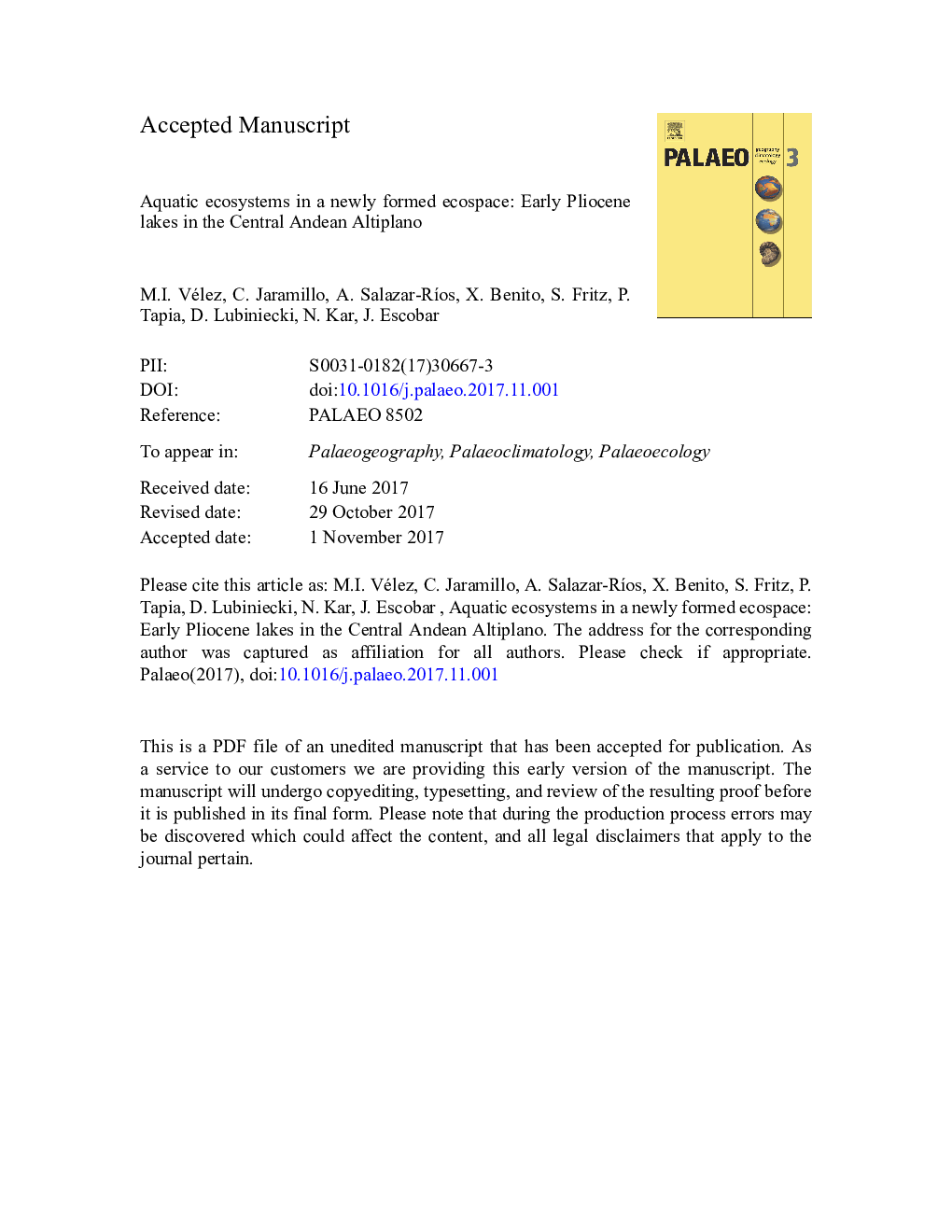| Article ID | Journal | Published Year | Pages | File Type |
|---|---|---|---|---|
| 8868445 | Palaeogeography, Palaeoclimatology, Palaeoecology | 2018 | 34 Pages |
Abstract
Uplift of the Altiplano in the Central Andes of South America had profound effects on land, oceans and atmosphere. Very little, however, is known about the ecosystems that developed on the ecospaces first formed once the Altiplano reached its present high altitude. We present a micropaleontological (diatoms and ostracods) and stratigraphic analysis of Pliocene Member C of the El Descanso Formation that outcrops near the town of YaurÃ, Perú. Lithofacies analysis indicates that fluvial conditions were eventually replaced by several lacustrine and marsh environments. Diatom and ostracod assemblages indicate that these bodies of water were alkaline, slightly saline and shallow. Lacustrine conditions were favoured by a change in the tectonic regime from compressional to tensional, which led to formation of small isolated basins, and by wet conditions. We hypothesize that a stronger and/or longer rainy season prevailed during that time in the Altiplano, possibly as a consequence of an intensified South American Summer Monsoon, driven by a warmer atmosphere, imposed by high concentrations of atmospheric CO2.
Keywords
Related Topics
Physical Sciences and Engineering
Earth and Planetary Sciences
Earth-Surface Processes
Authors
M.I. Vélez, Jaramillo C., Salazar-RÃos A., Benito X., Fritz S., Tapia P., Lubiniecki D., Kar N., Escobar J.,
